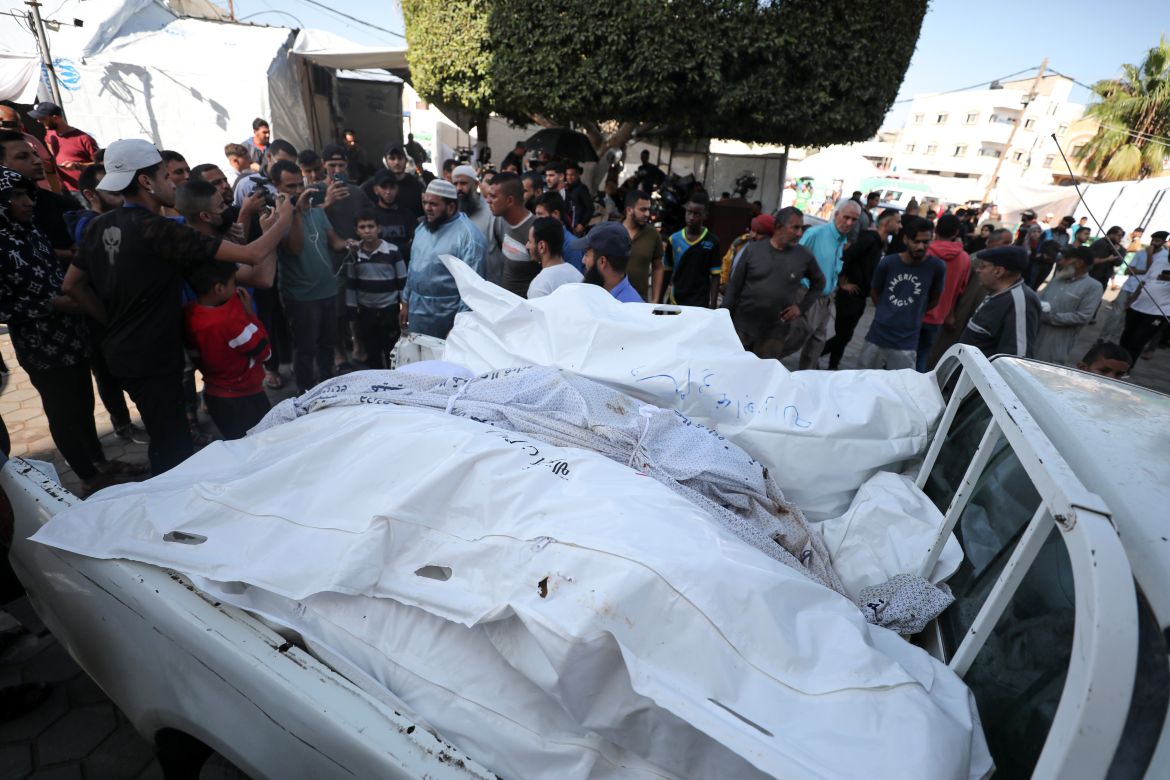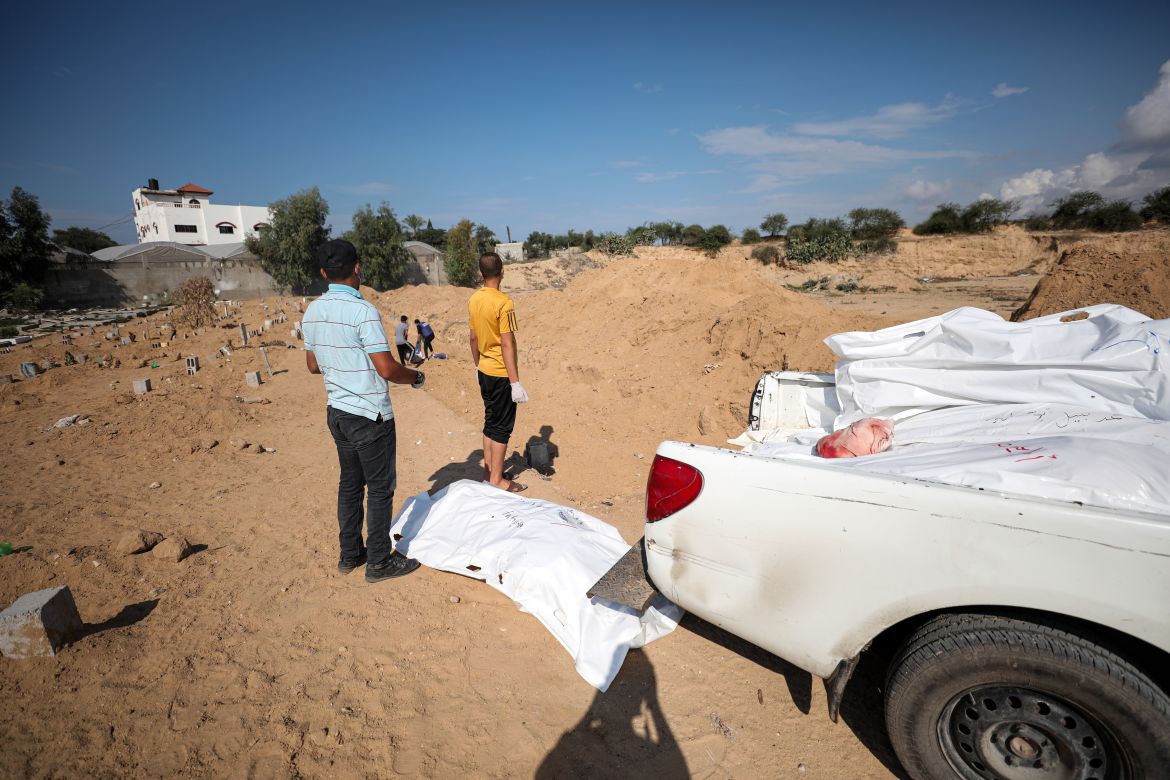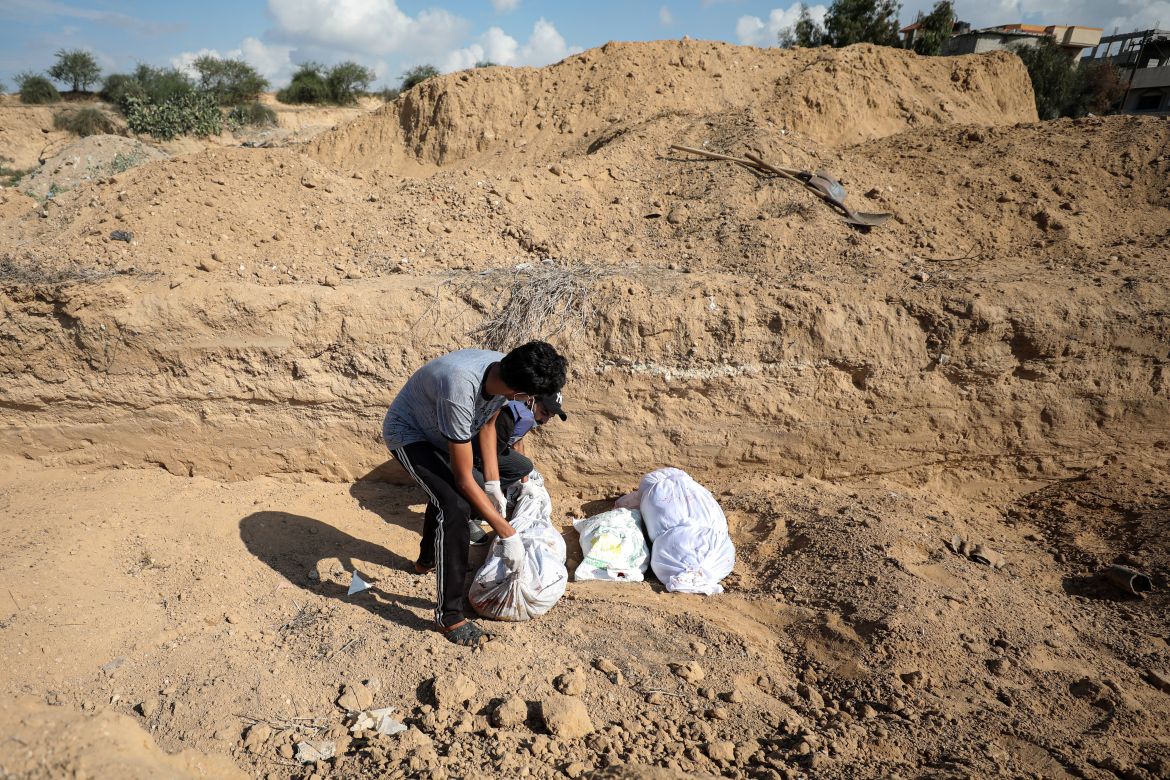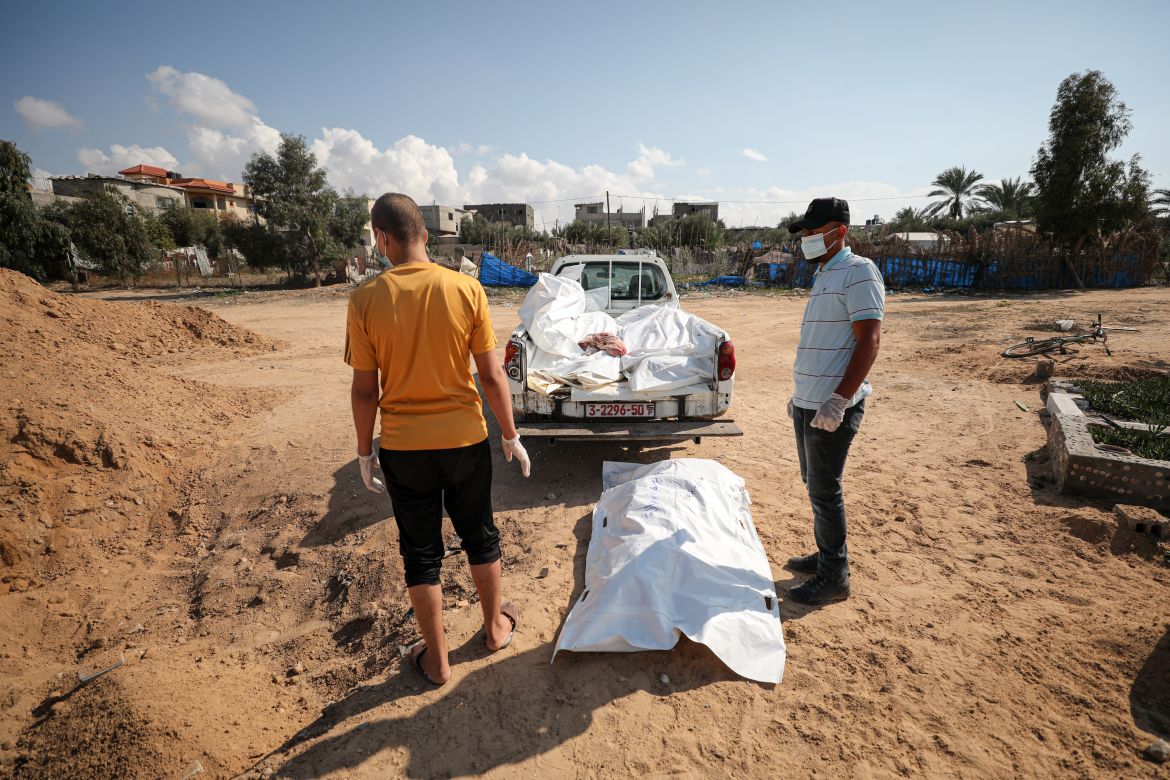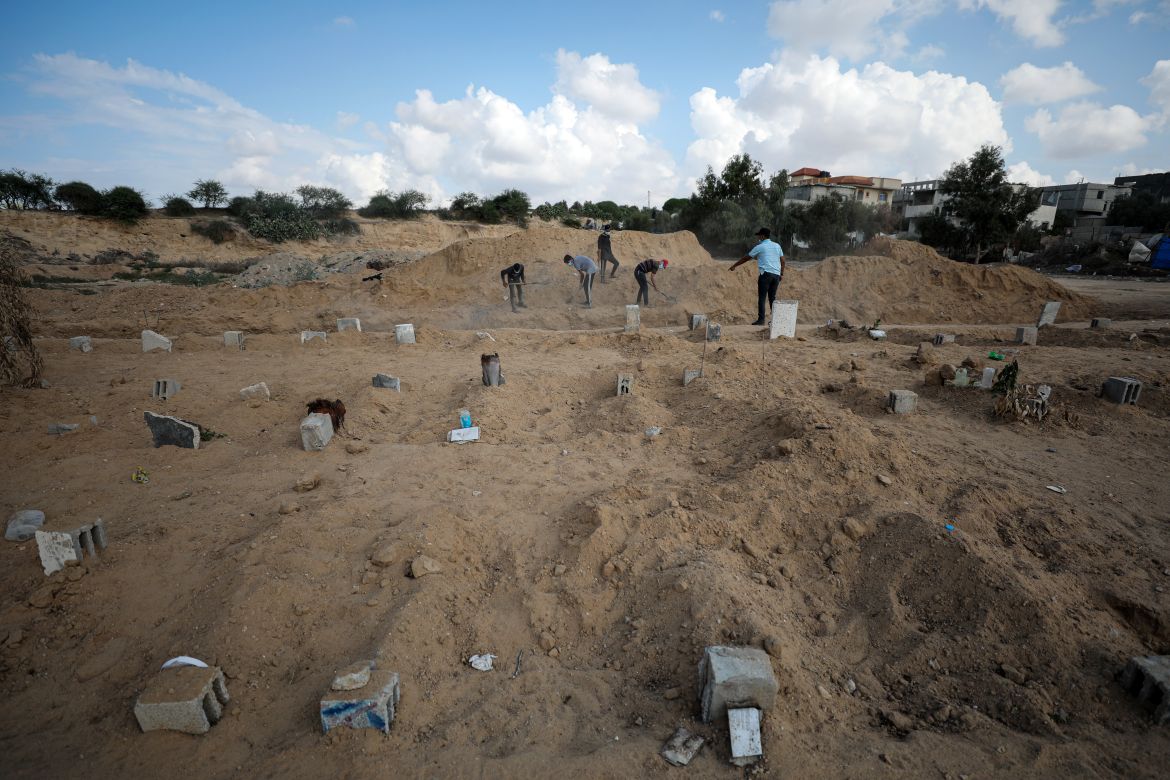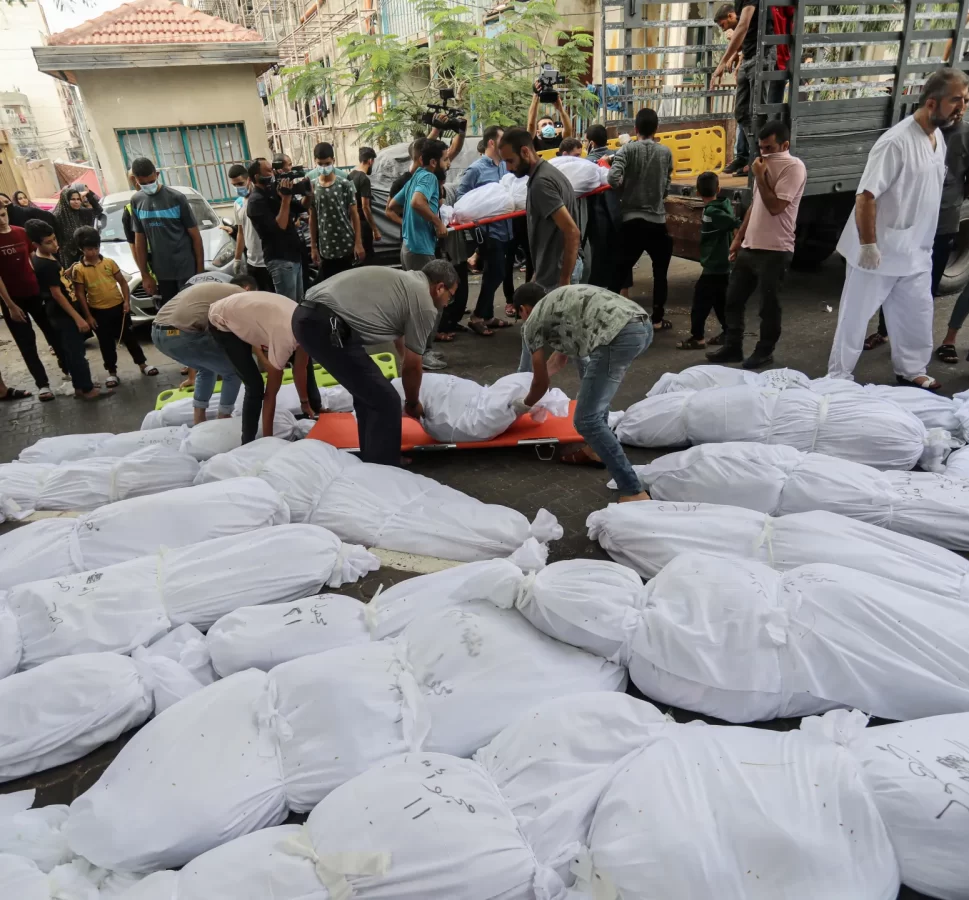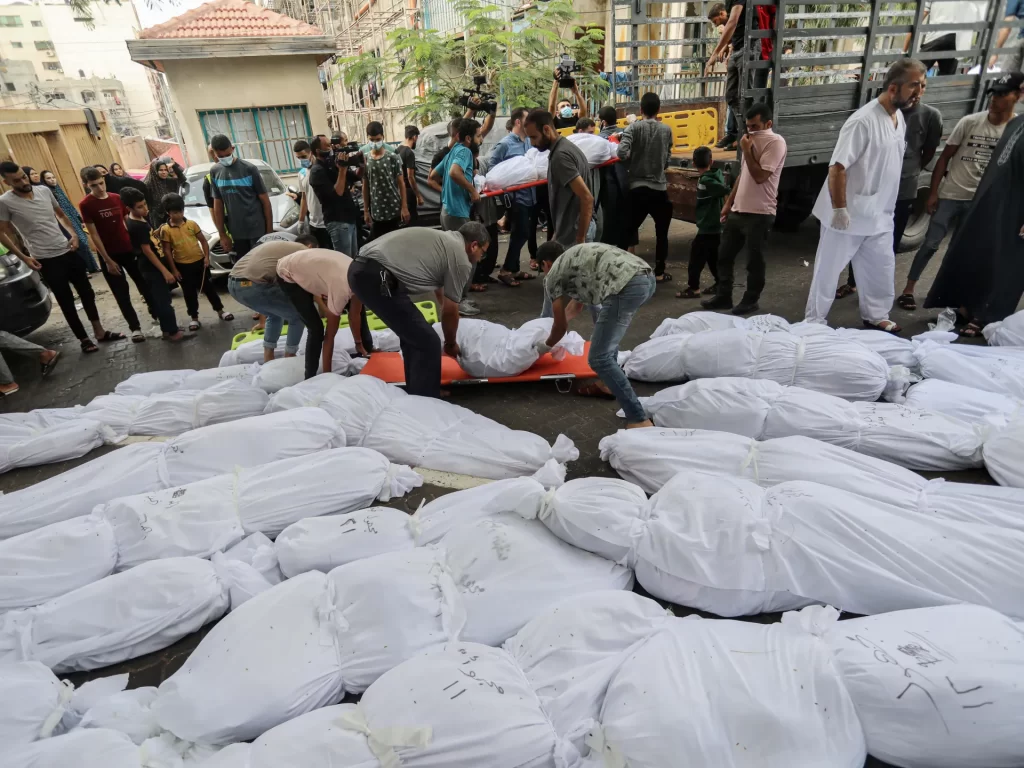
Team at Al-Aqsa Martyrs Hospital do what they can to provide last rites to those killed in Israeli attacks.
Deir el-Balah – Dozens of bodies, wrapped in improvised white cloths that double as shrouds, lie together in a newly dug mass grave.
They are the unidentified Palestinians who were killed in Israeli attacks, their bodies are either charred beyond recognition or torn apart, to the point where the burial supervisors are sometimes not completely sure if they got the whole person.
But the team at Al-Aqsa Martyrs Hospital does its best to offer the proper Islamic burial rituals to the remains, hoping that their efforts will allow the deceased victims to rest.
Yasser Abu Ammar, who supervises the ritual washing of the dead at the hospital, told Al Jazeera: “About 80 percent of the bodies we receive are torn apart. We’re burying torn-apart limbs, and some bodies have their organs lacerated and exposed.
“We’ve never seen anything like this, like these puzzling wounds inflicted on these mangled body parts.”
Abu Ammar added that he had supervised the burial of body parts belonging to a six-member family in one shroud.
“All of them barely made up one complete body,” he said.
Mohammed al-Hajj, hospital spokesperson, said about 150 unknown bodies have been buried so far, documented by a committee of police and health officials.
The bodies are numbered and photographed for the record.
“We also include information about the Israeli bombing that hit them, the date and place of the attack and the timing,” al-Hajj said. “We also record the names of the wounded and identified deceased people who arrived at the hospital at the same time.”
“It’s very hard to identify these bodies,” Abu Ammar said. “Family members resort to scrutinising body parts to catch a scar or a mole or even the burned remains of clothes that will help them identify their loved ones, but most of them can’t.”
In all his years of washing and burying bodies, he said, the first time he encountered unknown bodies was during this, the current Israeli offensive on Gaza.
“When I’m at home, my brain plays the tape of everything I saw that day … in detail. I can’t stop it. I’ve had the most terrible nightmares about these bodies.”
“This is the most harrowing thing I’ve ever been through.”
Photographs are helpful if relatives come to the hospital inquiring about their loved ones, but Abu Ammar says that in most cases, the victims’ skulls are shattered and their faces burned beyond recognition.
“These bodies were human beings … had dignity,” he said. “To see their bodies reduced to burned remains or chopped pieces is unbearable.”
